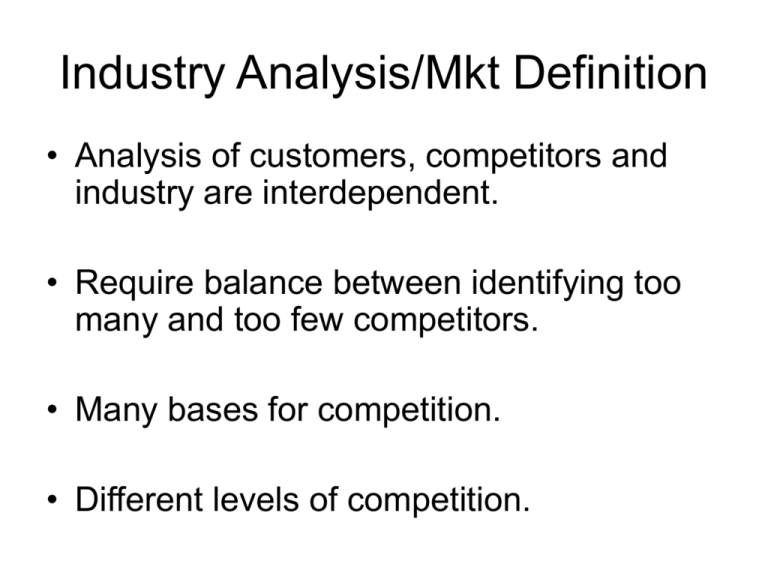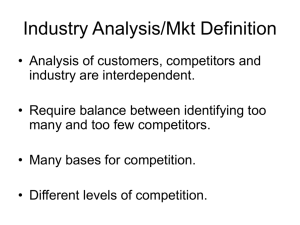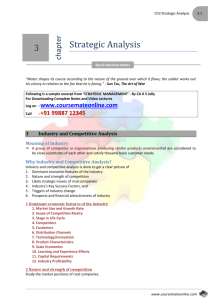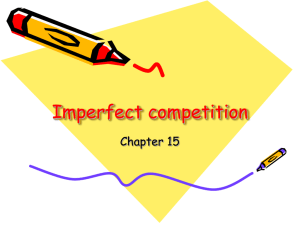Market definition
advertisement

Industry Analysis/Mkt Definition • Analysis of customers, competitors and industry are interdependent. • Require balance between identifying too many and too few competitors. • Many bases for competition. • Different levels of competition. Industry Analysis/ Mkt Definition • Bases of Competition 1. Customer oriented (Who they are; When they use it; Why they use it) 2. Marketing oriented (Theme/copy strategy; Media; Distribution; Price) 3. Resource oriented (Raw materials; Employees; Financial resources) 4. Geographic • Levels of Competition- 1. Product form; 2. Product category; 3. Generic; 4. Budget Industry Analysis/Mkt Definition • Methods of determining competition: 1. Existing categories 2. Technical feasibility of substitution 3. Managerial judgement Markets Products/Services Same Different Same A B Different C D Industry Analysis/Mkt Definition • Methods for determining competition (contd.): 4. Customer behavior based - Brand switching - Interpurchase times - Cross elasticity of demand 5. Customer judgement based - Overall similarity - Similarity of consideration sets - Product deletion - Substitution in use Competitor Identification • Identifying competitors by identifying substitutes • Substitutes are products whose crossprice elasticities of demand are positive • There is a distinction between direct and indirect competitors • Similar products in different geographic markets may not be substitutes Discussion question What do you think is the Antitrust approach to market definition? Market Definition • Market definition describes the market in which a firm competes • Two firms are in the same market if they constrain each others ability to raise price • Suppose all firms collectively set prices to maximize combined profits. Would they choose to raise prices by a least 5%? Market definition • If the own-price elasticity of a group of firms collectively is small, then this group of firms constitutes a well-defined market • Antitrust agencies (Dept of Justice) looks at the above Market Structure and Competition • Market structure refers to the number and distribution of firms in a market • Common measures are N-firm concentration ratio and Herfindahl index • The Herfindahl index of an industry depends on the nature of competition in the industry A typology of competition • Perfect competition: - many sellers - homogenous products -well-informed consumers can costlessly shop around A typology of competition • Monopoly: -no competition for output • Monopolistic competition: -many sellers -each sells a differentiated product • Oligopoly: -few sellers, so the actions of one firm materially affects the others A Tool for Assessing Industry Attractiveness: Porter’s Five Forces Threat of new entrants Bargaining power of suppliers Rivalry among existing industry firms Threat of substitute products Bargaining power of buyers











